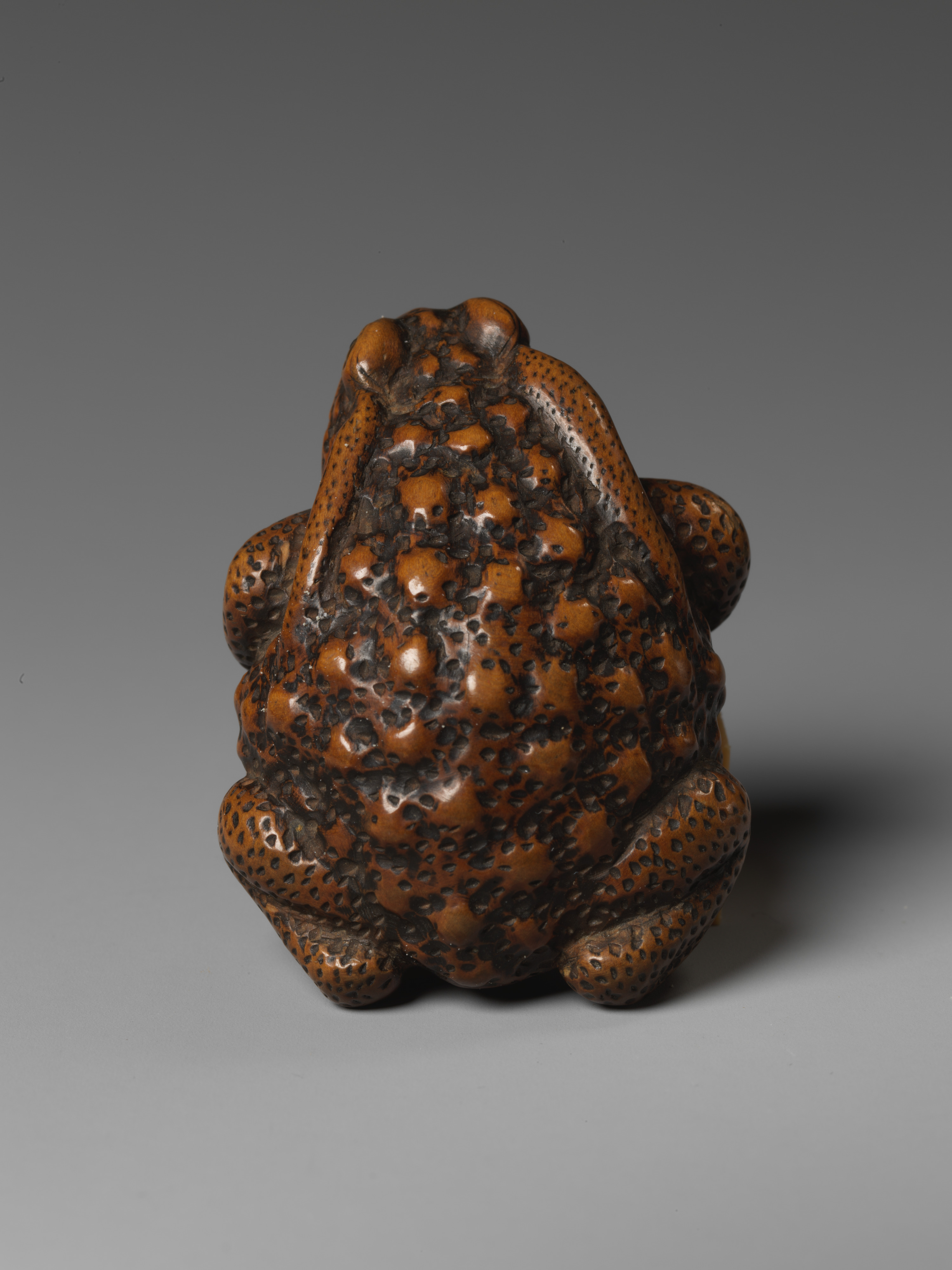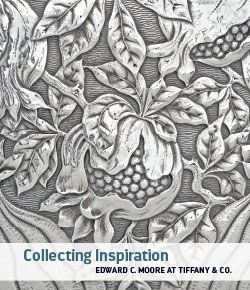Frog
Since the kimono has no pockets, a Japanese man typically suspended items such as his inrō (a small container; see examples nearby), pipe, purse, and writing implements on a silk cord pulled through his obi sash. A small toggle, known as a netsuke, was attached to the other end of the cord as a counterweight to prevent it from sliding down. In the Meiji period, when Western garments gradually replaced kimonos, Western collectors such as Moore assembled large collections of these refined carvings.
Animal-shaped silverwares by Tiffany, such as the frog creamer and puffer fish sugar bowl on view nearby, may well have been based on ideas sparked by netsuke. The frog, the charming white rabbit, the meek wild boar, and the tiny crab on a curling lotus leaf rendered in fine metal alloys here must have appealed to Moore.
Due to rights restrictions, this image cannot be enlarged, viewed at full screen, or downloaded.
This artwork is meant to be viewed from right to left. Scroll left to view more.






